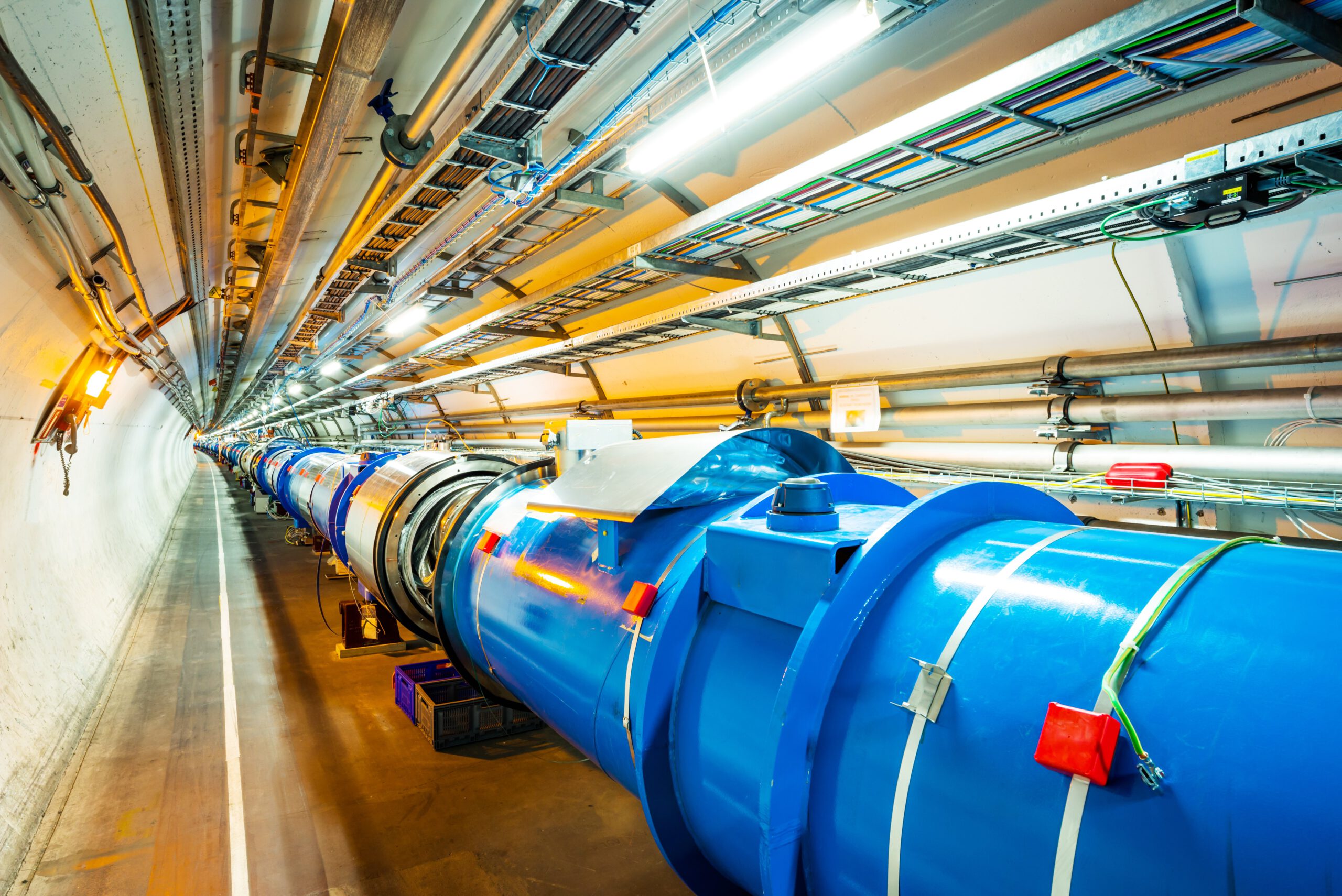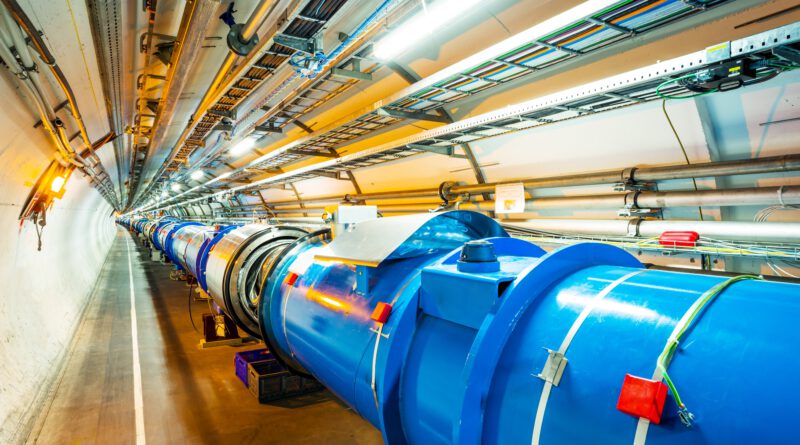CERN’s Large Hadron Collider is looking for dark photons. But… why?

The Large Hadron Collider may soon uncover the secrets of dark photons. Should we be scared? (Spoiler: no).
Back in the summer of 2022, TikTok lost its mind over news that the Large Hadron Collider — the particle collider run by the European Organization for Nuclear Research (CERN) at a giant installation on the border between Switzerland and France — was about to be switched back on after a spate of ho-hum findings led to it being taken offline.
The concern at the time was that resuming particle collisions was going to manifest various sci-fi apocalypse scenarios — y’know, summon Stranger Things-style creatures or annihilate the universe. That sort of thing. None of this was ever going to happen, but perhaps one could call the sudden spike in interest a win for science anyway.
Well, according to a December 27 statement from CERN, some of the LHC findings from this latest run of experiments are ready for public consumption, and they concern (flashlight under chin voice) dark photons.
What has CERN been up to since 2022, and what does it have to do with dark photons?
The new statement comes from the group working on CERN’s Compact Muon Solenoid (CMS), who are now publishing data from the “Run 3” round of experiments that started amid the TikTok wackiness of July 2022. The significance of Run 3 is that, thanks to the aforementioned pause in experiments, the LHC went into this phase with fresh upgrades, allowing higher instantaneous luminosity compared to previous runs, a feature that makes for more particle collisions at any given moment.
In the experiments being analyzed in the new data, dated August 2023, the CMS team was looking for dark photons in the decay of Higgs bosons — the Higgs boson being CERN’s former white whale particle, which it found, to great fanfare, in 2012. Dark photons, if they actually exist, are good targets for experimentation, in part because they’re thought to be long-lived particles (LLPs) — meaning they exist for longer than one-tenth of one billionth of a second.
Broadly speaking, the CMS team looks for various LLPs, and the dark photon would just be one such theoretical particle. LLPs would decay into easier to observe particles similar to heavy electrons called muons, which, if you’re following all the physics-speak, is why these findings come from the Compact Muon Solenoid team.
What is a dark photon anyway, and why is CERN looking for it?
In addition to being LLPs, dark photons would also be considered “exotic,” (apologies for still more physics jargon) which means they would exist outside the standard model of physics, the reliable rule book for the behavior and effects of known particles. It’s worth noting that not everything “exotic” is all that, um, exotic. Gravity, for instance, exists outside of the standard model.
Theoretical physicists say dark photons would be particles related to dark matter. In non-sci-fi physics, dark matter is neither a weapon, nor a warp drive fuel, but simply a mysterious theoretical substance that emits no light, but nonetheless has — or seems to have — gravitational effects. Dark photons would play a role in the interactions between dark matter particles similar to the role regular photons play in electromagnetism.
Has CERN found dark photons?
So far, CERN’s data from this experiment does not contain definitive proof of the existence of dark photons. The new statement instead touts sophisticated new forms of particle collision analysis. Higher instantaneous luminosity means a lot more data to analyze — so much, in fact, that “recording every collision would quickly consume all the available data storage,” according to the Dec. 27 statement.
Instead, the CMS team relies on an algorithmic system apparently known as “the trigger” (Okay, are they deliberately trying to freak out TikTok?). The trigger highlights only the potentially interesting collisions, allowing for consequential data to be stored, and the rest to be tossed out.
Juliette Alimena, a particle physicist working on the CMS experiment, notes in the statement that the trigger “allows us to collect much more events than before with muons that are displaced from the collision point by distances from a few hundred micrometers to several meters. Thanks to these improvements, if dark photons exist, CMS is now much more likely to find them.”
So is the absence of evidence so far for the existence of dark photons just more disappointing news out of CERN? You be the judge. Optimistically, one could argue that the absence of breakthrough data so far allows CERN scientists to know where not to keep looking. Then they can refine their models and keep up the search.

